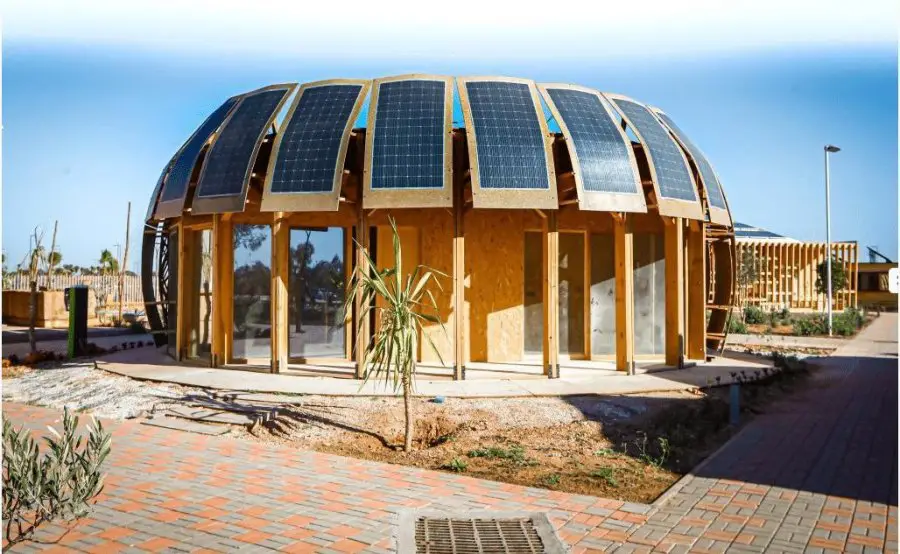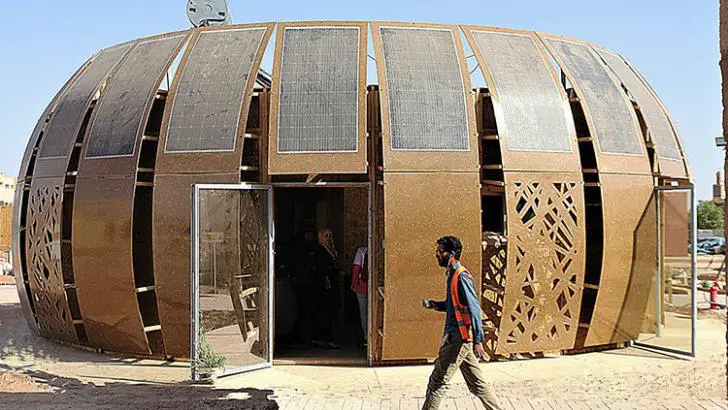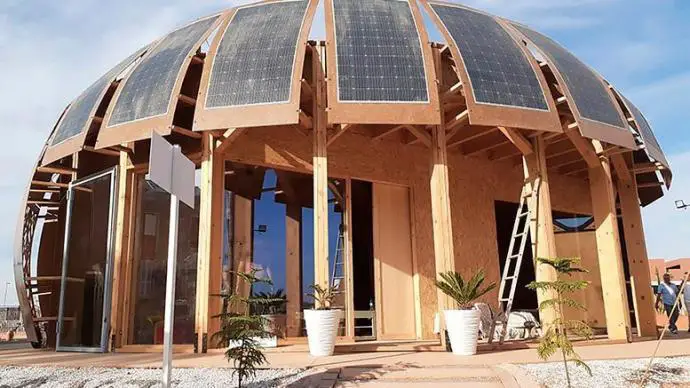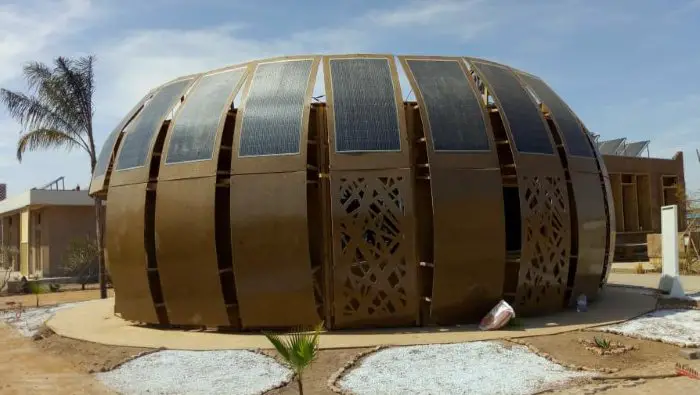Moroccan Students Construct Off-Grid House Using Hemp And Solar Panels
Tags: News

A spherical home built with hemp and solar panels by a group of students in Morocco has received praise for its sustainable building practices as well as it’s relatively cheap price tag.

The project was one of the entries in the ‘Solar Decathlon’ competition, which is organized by the United States Department of Energy and Morocco’s Centre de recherche en Energie solaire et Energies nouvelles.
The most recent event took place in Morocco, the first time it’s been held in Africa.
Twenty international contestants entered, including TEAM SUNIMPLANT, a Moroccan-German group who constructed the hemp and solar panel house.
The home encompasses 90 square meters and comprises 24 photovoltaic solar panel. At $120,000, it cost less than half of the other entries did.
Local hemp
The house was built using hemp sourced in the area as well as vegetable-based bio-resins and other non-synthetic local materials.
The team was led by Monika Brümmer, a German architect and natural builder. She refers to the house as a ‘space-ship’ due to its saucer or dome like shape.
“This ‘space-ship’ is advanced in time and reflects a turn not only in North Africa but in hemp construction, which doesn’t have comparable prototypes anywhere in the world,” said Brümmer.
The house is designed primarily for rural regions but can potentially be adapted for urban environments.
“The cylindrical envelope of the circular building, with minimal exposure of the 24 exterior panels, gives interior comfort through optimal damping and thermal phase shift, and osmosis of the components in the hempcrete formulation,” Brümmer explained.
Brümmer is also a co-founder of Adrar Nouh, which contributed towards the architectural design as well as the development of the hemp material. Morocco’s National School of Architecture and National School of Applied Sciences and Germany’s Fraunhofer Center for Silicon Photovoltaics were also part of the SUNIMPLANT team.

Innovative hemp house features
A number of technologies were used, including:
– A double skin façade, created by mixing hemp, earth, pozzolan and lime.
– Bio-composites produced via vacuum injection technology.
– A spherical, aerodynamic outer skin made up of 24 semi-flexible photovoltaic panels.
– The solar panels have been optimised for a maximum 40% loss.
– The panels are curved and made from hemp wool which protects the back of the panels against extreme heat.
– High-performance glass from French company Saint Gobain.
Hempcrete is becoming increasingly popular in construction and France is one of the countries at the forefront of this.
It works as an insulator and moisture regulator and is not as brittle as concrete. Hempcrete can be used as a substitute for fiberglass, sheetrock, and drywall. It also offer superior flame resistance and noise reduction.
Read more: Sweden And Austria Go Coal-Free After Shutting Down Their Last Coal Power Plants
As you might know, tech giants like Facebook, Twitter, and Google (Also Youtube), increasingly censor information that does not fit the mainstream narrative. Freedom of speech should be the basic human right, however, in the current era, you are not allowed to share your views anymore. Fortunately, alternative platforms appear that are censorship-free. Minds.com is one of these platforms. You can sign up for free, HERE, and make sure you follow Truth Theory on Minds.
Image credit: MiddleEastSolar

Leave Comment: